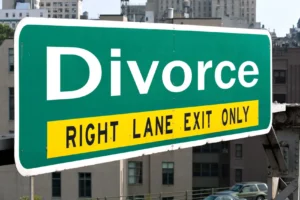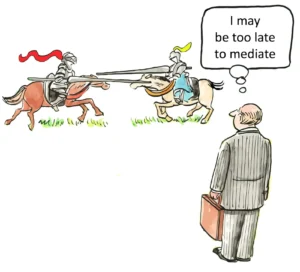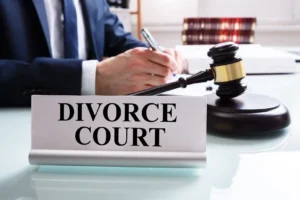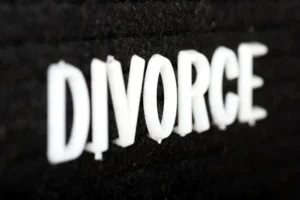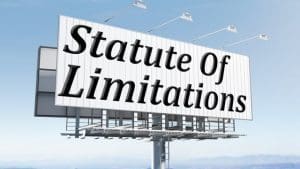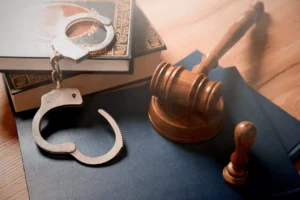The Relationship Between Due Process and Equal Protection
The relationship between due process and equal protection stands as one of the most intricate and consequential intersections in American constitutional law. At its core, this relationship shapes the boundaries of governmental power and the rights of individuals, weaving together the principles of fairness, liberty, and equality. The United States Constitution, through the Fifth and Fourteenth Amendments, enshrines these doctrines, ensuring that no person is deprived of life, liberty, or property without due process of law and that all are entitled to the equal protection of the laws. This dual guarantee forms the backbone of our legal system’s commitment to justice and civil rights, and understanding their interplay is essential for anyone navigating the legal landscape.
Due process is often described as the constitutional requirement that the government must respect all legal rights owed to a person. It acts as a safeguard from arbitrary denial of life, liberty, or property by the government outside the sanction of law. Due process comes in two forms: procedural and substantive. Procedural due process demands fair procedures-notice, a hearing, and an impartial tribunal-before the government can deprive someone of a protected interest. Substantive due process, on the other hand, protects certain fundamental rights from government interference, even if the procedures used are fair. These rights, though not always explicitly listed in the Constitution, have been recognized by the courts as essential to liberty and justice, encompassing areas such as marriage, family, and bodily autonomy.
Equal protection, meanwhile, is the principle that the government must treat individuals in similar situations equally. The Equal Protection Clause of the Fourteenth Amendment explicitly prohibits states from denying any person within their jurisdiction the equal protection of the laws. This clause has been the foundation for landmark decisions combating discrimination on the basis of race, gender, and other classifications. It requires that any government action drawing distinctions among people must be justified by a legitimate governmental interest and, in cases involving suspect classifications or fundamental rights, must withstand heightened judicial scrutiny.
The relationship between due process and equal protection is not merely academic; it is deeply practical and often determinative in real-world cases. Frequently, legal challenges invoke both doctrines together, especially when government action both infringes on a fundamental right and treats groups differently. For example, a law that prohibits only certain groups from marrying not only denies a fundamental right (triggering due process concerns) but also discriminates between classes of people (raising equal protection issues). This dual analysis is evident in cases like Loving v. Virginia, where the Supreme Court struck down bans on interracial marriage under both due process and equal protection grounds.
One of the most compelling aspects of this relationship is how the doctrines reinforce and inform one another. When the government enacts a law that burdens a fundamental right, courts will examine whether the law is justified under both due process and equal protection frameworks. If the law targets a specific group for unfavorable treatment, equal protection analysis is triggered. If the law deprives everyone of a fundamental right, due process is the primary lens. However, when both are at play, the courts often apply the strictest level of scrutiny, demanding that the government show a compelling interest and that the law is narrowly tailored to achieve that interest.
This intersection is not just theoretical-it shapes some of the most pressing civil rights issues of our time. Consider the ongoing debates over voting rights, marriage equality, and criminal justice reform. In each of these areas, litigants have invoked both due process and equal protection to challenge laws and practices that either broadly infringe on rights or target specific groups for disparate treatment. The courts’ willingness to recognize the interplay between these doctrines has led to broader and more robust protections for individuals, especially those belonging to historically marginalized groups.
A particularly salient example is the ongoing litigation surrounding wealth-based discrimination in the criminal justice system. Courts have increasingly recognized that practices such as imposing fines, fees, or cash bail can violate both due process and equal protection when they disproportionately burden the poor. In these cases, the analysis often centers on whether the government’s procedures are fair (due process) and whether they treat similarly situated individuals differently based on wealth (equal protection). This “equal process” approach, as some scholars have termed it, reflects a growing recognition that fairness and equality are inseparable in the pursuit of justice.
The Fourteenth Amendment is the primary constitutional source for both due process and equal protection at the state level. Its Due Process Clause guarantees that states cannot deprive any person of life, liberty, or property without due process of law, while its Equal Protection Clause ensures that all persons receive equal treatment under the law. The Fifth Amendment, applicable to the federal government, contains a due process guarantee but lacks an explicit equal protection clause. Nevertheless, the Supreme Court has interpreted the Fifth Amendment’s Due Process Clause as encompassing equal protection principles, ensuring that federal actions are also subject to equality requirements.
In practice, the distinction between due process and equal protection often hinges on the nature of the government action and the rights at stake. If a law deprives everyone of a particular right, such as the right to marry, the analysis centers on due process. If a law allows some people to marry but denies that right to others based on a classification-race, gender, or wealth-then equal protection becomes the focus. Yet, many cases involve both elements, requiring courts to navigate the complex interplay between these doctrines.
The standards of judicial review applied in due process and equal protection cases are another area where their relationship becomes critical. Both doctrines employ a tiered approach: strict scrutiny for suspect classifications or fundamental rights, intermediate scrutiny for quasi-suspect classifications like gender, and rational basis review for all other cases. The choice of standard can determine the outcome of a case, making the initial framing-whether as a due process or equal protection claim-strategically significant for litigants.
Recent Supreme Court jurisprudence, particularly opinions authored or joined by Justice Clarence Thomas, has questioned the legitimacy of substantive due process as a constitutional doctrine. Justice Thomas has argued that the Due Process Clause should not be interpreted to create substantive rights, but rather to guarantee fair procedures. He contends that many rights currently protected under substantive due process would be better grounded in other constitutional provisions or left to the democratic process. This perspective reflects a broader conservative skepticism toward judicially created rights not explicitly enumerated in the Constitution, emphasizing the importance of textualism and original understanding.
This approach has significant implications for the future of constitutional rights. If the Court were to retreat from substantive due process, many rights currently protected under that doctrine-such as privacy, contraception, and marriage equality-would need to find support elsewhere in the Constitution, potentially under the Equal Protection Clause or through legislative action. This shift would realign the balance between judicial protection of individual rights and democratic self-government, a debate that lies at the heart of American constitutionalism.
The Equal Protection Clause remains a vital tool for challenging discriminatory laws and practices, especially as society confronts new forms of inequality. Contemporary legal battles over gender identity, sexual orientation, and disability rights often invoke equal protection arguments to demand fair treatment and access to opportunities. At the same time, procedural due process continues to serve as a bulwark against arbitrary government action, ensuring that individuals receive notice and a hearing before being deprived of important interests.
The convergence of due process and equal protection is perhaps most evident in cases involving the rights of non-citizens and marginalized groups. The Supreme Court has consistently held that constitutional protections extend to all persons within the United States, regardless of citizenship status. This inclusive reading underscores the fundamental principle that rights are not privileges reserved for a select few, but are inherent to all human beings subject to the jurisdiction of American law.
In the realm of criminal justice, the guarantee of due process protects individuals from unjust deprivation of liberty, while equal protection demands that laws be applied impartially, without regard to race, wealth, or other arbitrary classifications. The ongoing debates over bail reform, sentencing disparities, and police practices highlight the continuing relevance of these doctrines in ensuring a fair and just legal system.
The relationship between due process and equal protection is also central to debates over the scope of government power and the limits of judicial intervention. Conservatives often emphasize the dangers of judicial overreach and the importance of leaving policy decisions to elected representatives. From this perspective, the courts should exercise restraint, intervening only when government action clearly violates the text and original meaning of the Constitution. This approach favors a narrow reading of substantive due process and a more limited role for the judiciary in expanding rights beyond those explicitly enumerated.
At the same time, the courts have a duty to enforce the Constitution’s guarantees of fairness and equality, especially when the political process fails to protect vulnerable groups. The challenge lies in striking the right balance between judicial enforcement of constitutional rights and respect for democratic decision-making. The ongoing evolution of due process and equal protection jurisprudence reflects this tension, as courts grapple with new cases and changing social norms.
In education, the interplay between due process and equal protection has shaped landmark decisions on desegregation, access to public education, and the rights of students. The Supreme Court’s decision in Brown v. Board of Education relied on equal protection principles to strike down racial segregation in public schools, while subsequent cases have invoked due process to protect the rights of students facing suspension or expulsion. These cases illustrate how the two doctrines work together to ensure both fairness in procedures and equality in outcomes.
In the context of economic regulation and social welfare, due process and equal protection provide important checks on government power. Laws that impose burdens on the poor or restrict access to benefits must be justified by legitimate governmental interests and applied fairly. The courts have used both doctrines to strike down arbitrary or discriminatory laws, ensuring that all individuals have an opportunity to participate in society on equal terms.
The relationship between due process and equal protection is not static; it evolves in response to new challenges and societal changes. As technology advances and new forms of discrimination emerge, the legal system must adapt to ensure that the principles of fairness and equality remain robust. Issues such as data privacy, algorithmic bias, and access to digital resources present fresh questions for courts and policymakers, requiring a nuanced understanding of both due process and equal protection.
For legal professionals, understanding the interplay between these doctrines is essential for effective advocacy and analysis. Whether challenging a law as unfairly burdensome or as discriminatorily applied, attorneys must navigate the complex terrain of constitutional rights, standards of review, and judicial precedent. Mastery of these concepts enables lawyers to craft compelling arguments and to protect the rights of their clients in an ever-changing legal environment.
Ultimately, the relationship between due process and equal protection embodies the American commitment to both liberty and equality. It reflects the belief that justice requires not only fair procedures but also equal treatment under the law. As society continues to confront new challenges and debates over the meaning of rights and the role of government, these twin pillars of constitutional law will remain at the forefront, guiding the pursuit of a more just and equitable nation. The ongoing dialogue between courts, legislatures, and the public ensures that the promise of due process and equal protection endures, adapting to meet the needs of each new generation while remaining rooted in the enduring principles of the Constitution.
Citations:
- Analyzing Legal Scholarship on Due Process and Equal Protection
- Explaining Due Process and Equal Protection Clauses in Alaska Criminal Law
- William & Mary Law Review Article on Constitutional Law
- Equal Protection Overview and Legal Insights on Attorneys.Media
- PubMed Article on Legal and Ethical Issues in Due Process
- Clarence Thomas and the Future of Marriage and Contraception Rights
- Bar Exam Prep: Equal Protection vs Due Process Explained
- Reddit Discussion: Trump on Trials and Due Process Rights
- Law School Insights: Due Process vs Equal Protection Analysis
- National Constitution Center: Fourteenth Amendment Equal Protection Clause
- Law School Community: Due Process vs Equal Protection Debate
- Explaining the Difference Between Equal Protection and Due Process
- PBS Guide: Due Process, Equal Protection, and Voting Rights
- Catholic University Law Review Article on Constitutional Protections
- Cornell Law: Equal Protection as a Substantive Component of Due Process
- Cornell Law School: Equal Protection Legal Definition and Context
- Semantic Scholar Research on Constitutional Law and Civil Rights
- Semantic Scholar Article on Legal Doctrines Related to Equal Protection
- Semantic Scholar Study on Due Process and Equal Protection
- Semantic Scholar Paper on Intersection of Due Process and Equal Protection
- Legal Advice Off Topic: Federal Law and Explicit Discrimination
- SCOTUS Reddit: Opinions on Constitutional Footnotes and Due Process
- Bar Exam Discussion: Substantive Due Process Legal Analysis
- Bar Exam Prep: Standards of Review for Constitutional Law
- Supreme Court Reddit: Validity of Substantive Due Process
- Law School Discussion: Explaining Fundamental Rights in Constitutional Law
- AskConservatives Reddit: Clarifying the Fourteenth Amendment Wording
- Supreme Court Reddit: Due Process Clauses of the 5th and 14th Amendments
- Law Reddit: Equal Protection Clause Discussion and Analysis
- Political Debate Reddit: Views on Substantive Due Process
- NeutralPolitics Reddit: Constitutional Basis for Protection of Rights
- Justia: Procedural Due Process in Civil Cases
- Catholic University Law Review: Constitutional Law and Civil Rights
- National Constitution Center: Fourteenth Amendment Equal Protection Clause
- Justia Supreme Court: Due Process Case Law by Topic
- Duke Law Faculty Scholarship: Constitutional Law Research
- Congressional Constitution: Fourteenth Amendment Section 1 Essay
- PBS Image: Felon Voting and Constitutional Equality
- William & Mary Law Review: Due Process and Equal Protection Scholarship
- Harvard Law Review: Analysis of Due Process and Equal Protection
- Constitution Center: The Equal Protection Clause Interpretation
- Virginia Law Review: Book on Constitutional Law and Civil Rights
- National Archives: The 14th Amendment Milestone Document
- Michigan Law Review: Due Process and Equal Protection Article
- PubMed Article: Contemporary Issues in Due Process and Equal Protection
- Semantic Scholar: Legal Analysis of Due Process and Equal Protection
- Semantic Scholar: Study on the Intersection of Due Process and Equal Protection
- Semantic Scholar: Research on Due Process and Equal Protection Doctrines
- AskConservatives Reddit: Social Media Support for Due Process
- Abortion Debate Reddit: Equal Protection and Right to Life Bill
- Law Reddit: Trump Requests Supreme Court Approval for Deportation
- Law Reddit: News on US Constitutional Crisis
- AskConservatives Reddit: Opinions on the Value of Due Process
- Politics Reddit: Trump Requests Supreme Court Approval for Deportation
- Politics Reddit: Fox News Suggests Limiting Due Process
- Destiny Reddit: Citizenship and Due Process Rights Discussion
- AskDemocrats Reddit: Obama and Due Process in Deportations
- NAACP Legal Defense Fund Equal Protection Initiative Counsel Career Opportunity
- Eight Supreme Court Cases to Watch on Civil Liberties Issues
- Supreme Court Cases Addressing Equal Protection Clause
- Constitutional Law Overview and Resources on Attorneys.Media
- Landmark Supreme Court Cases Explained by Brennan Center
- University of Miami Law Review Article on Equal Protection and Civil Rights
- LDF Files Amicus Brief Defending Legal Profession from Executive Orders
- Podcast: Law for Non-Lawyers on Due Process and Equal Protection
- What to Know About Supreme Court Case on Youth Gender-Affirming Care
- LDF Files Amicus Brief Defending Against Targeting of Legal Profession
- Justia: Due Process of Law Under the Fourteenth Amendment
- Historical Evolution of Due Process on Attorneys.Media
- YouTube Video: Understanding Due Process and Equal Protection
- Yick Wo v. Hopkins and the Equal Protection Clause Resource
- PubMed Article: Legal and Ethical Perspectives on Due Process
- Semantic Scholar: Analysis of Equal Protection in Constitutional Law
- Semantic Scholar: Legal Study on Due Process and Civil Rights
- Semantic Scholar: Research on Equal Protection Doctrine
- Reddit Centrist: Did Obama Deny Due Process During His Administration?
- Libertarian Reddit: What Happened to Due Process Rights?
- Reddit OutOfTheLoop: Focus on Justice Thomas in Legal Debates
- Reddit Centrist: Major Political Flashpoints and Legal Issues
- Reddit Centrist: Frustration Over Public Understanding of Legal Rights
- Reddit Foodforthought: Justice Thomas and Supreme Court Opinions
- Reddit PoliticalDebate: Incompatible Ideas on Freedom of Speech
- Reddit AskALiberal: Challenges in Political and Legal Discussions
- Reddit LegalAdviceOffTopic: Modern Legal Standpoint on Historic Cases
- Reddit AskALiberal: Supreme Court and Current Legal Rights
- Reddit AskConservatives: First Amendment and Government Administration
- Catholic University Law Review: Civil Rights and Equal Protection
- University of Virginia Law: Publication on Equal Protection and Legal Theory
- Politico: Clarence Thomas and the Future of Constitutional Rights
- Poynter: Journalists and Liberty Under the 14th Amendment
- Cornell Law: Equal Protection Legal Definition and Context
- Founding Freedoms Law: Justice Thomas on Substantive Due Process
- Hofstra Law Review: Analysis of Due Process and Equal Protection
- PBS: Due Process, Equal Protection, and Voting Rights
- New Yorker: Clarence Thomas and Supreme Court Prophecies
- First Amendment Encyclopedia: Freedom of the Press
- Semantic Scholar: Legal Analysis of Substantive Due Process
- Semantic Scholar: Research on Equal Protection and Civil Liberties
- Semantic Scholar: Study on Due Process in Constitutional Law
- Semantic Scholar: Analysis of Due Process and Equal Protection Issues
- Semantic Scholar: Research on Equal Protection Jurisprudence
- Reddit Bar Prep: Equal Protection vs Substantive Due Process
- Reddit SupremeCourt: ERA vs 14th Amendment Legal Question
- Semantic Scholar: Due Process and Equal Protection in Legal Systems
- Semantic Scholar: Constitutional Law and Equal Protection Article
- PubMed Article: Contemporary Legal Issues in Due Process
- Semantic Scholar: Study on Legal Doctrines of Equal Protection
- Semantic Scholar: Analysis of Due Process in Modern Jurisprudence
- Semantic Scholar: Research on Due Process and Equal Protection Principles
- Reddit AskConservatives: Should Migrants Be Entitled to Due Process?
- Reddit Centrist: Right-Leaning Views on Legal Issues
- Reddit Centrist: Trump on Due Process and Trials
- Reddit AskTrumpSupporters: JD Vance and Legal Rights
- Reddit Self: Supreme Court and Ending Due Process
- ABA Journal: Supreme Court Debate Over Transgender Care and Constitutional Rights
- Congressional Research Service: Equal Protection and Civil Rights Legal Report
- Election Law Blog: Analysis of Recent Equal Protection Developments
- Semantic Scholar: Legal Frameworks for Equal Protection
- Semantic Scholar: Research on Constitutional Law and Equal Rights
- Semantic Scholar: Study on Due Process and Equal Protection Trends
- Semantic Scholar: Analysis of Equal Protection in Modern Law
- PubMed Article: Due Process and Equal Protection in Legal Medicine
- Reddit Askpolitics: Scope of the US Constitution
- Reddit PoliticalDiscussion: Justice Thomas on Obergefell v. Hodges
- Reddit AskALiberal: Rights Conservatives Are Trying to Limit
- University of Pennsylvania Law Review: Equal Protection and Civil Liberties
- Supreme Court History: Women’s Rights and Equal Protection Clause Decisions
- George Washington University Law: Faculty Publication on Equal Protection





